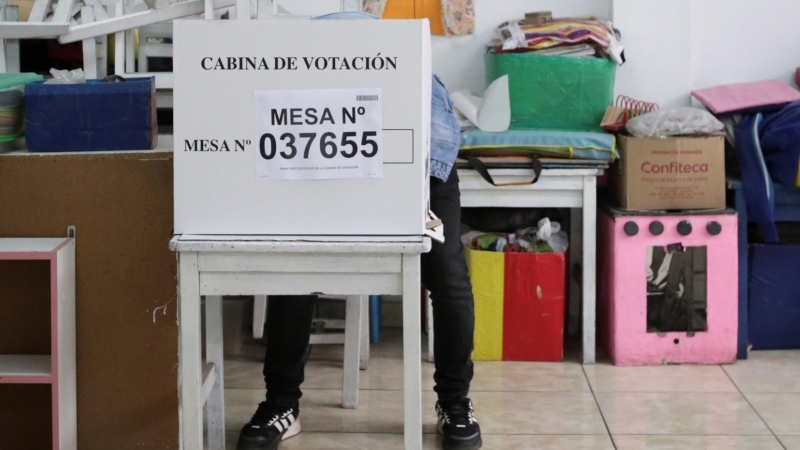RIO DE JANEIRO, BRAZIL – With an agonizingly tight vote count, which threatens to drag on for several days before an official result can be counted, the Peruvian elections nevertheless allow us to draw some conclusions about the political, social, and economic situation of the country.
Regardless of whether the winner is Pedro Castillo (far left) or Keiko Fujimori (authoritarian right), the picture that the vote leaves of Peru and its problems is clear.

An abyss separates the large urban centers of the Pacific coast from the rest of the country. The “anti-fujimorismo” is the most consistent and widespread political expression in Peru. The strength of the electoral system is firm, and the foreign vote is and will be decisive in the outcome.
It also seems clear that whoever is elected will do so with a weak legitimacy and will be forced to build bridges after an extremely polarized campaign that has sharply divided the country.
1.- TWO PARALLEL REALITIES
Peru has two parallel realities. The northern Pacific coast and Lima, on the one hand, and the rest of the territory, on the other.
Although this division has been articulated and emphasized for years, the vote seems to settle the discussion.
Lima, Callao, and the regions of La Libertad, Lambayeque, Tumbes, and Piura, as well as Ica, to a lesser extent, have largely voted for Fujimori and her proposals for neoliberal economic continuity.
Read also: Peru elections – Keiko Fujimori, in spite of everything, is the model for saving the “model”
These are areas that have taken advantage of the economic policies of the last 30 years, which concentrate on trade flows and agro-industrial investment, have better communication routes, and are more densely populated.
They are also areas with a larger population of European or mestizo origin, where the political violence of the 80s and 90s of the previous century was lower.
On the other side is the interior, particularly the high Andean regions of the south, with a very high population of native peoples, which was devastated during terrorism, which treasures enormous mining and energy resources, but which economic development left aside.
The vote for Castillo there is overwhelming: Puno (89 %), Cuzco (82.9 %), Apurímac (81 %) and Ayacucho (81 %).
2.- THE “ANTIFUJIMORISMO”
The “anti-Fujimorismo”, the loose political-citizen coalition articulated in terms of its rejection of Keiko Fujimori and her father, former president Alberto Fujimori (1990-2000), is the main political force and, in fact, the most influential in the country.
For this group, the Fujimoris and their policies are the paradigmatic representation of evils such as corruption, abuses of power, state terrorism, and the takeover of government power.
Read also: Peru elections – Pedro Castillo, the conservative rural teacher calling for radical change
Despite the overwhelming support of the media and the economic powers-that-be, Fujimori does not seem to have succeeded in getting across her reiterated message to cast a vote as a referendum between “communism and freedom” or in defense of the economic “model” to overcome the rejection of her as a person.
Or, to put it another way: few of Castillo’s votes are clearly due to his proposals for economic and constitutional change, but rather the simple fact that he is not Keiko Fujimori.
3.- BUILDING BRIDGES
Whoever wins these elections will do so with “borrowed” votes united against a “greater evil”, which implies a weak legitimacy.
The task will be to maintain the precarious popular support and approach the rest of the citizenry that demands results: Peru is going through a deep economic, social, and health crisis requiring a collective approach and a common effort.
In 2016 Pedro Pablo Kuczynski overcame Keiko Fujimori on the ballot in similar circumstances by a difference of barely 40,000 votes.
Fujimori did not accept the result, and from Congress, where she held an overwhelming parliamentary majority, she did the possible and the impossible to derail the Executive, and ended up unleashing a gigantic political crisis whose consequences are still being felt today.
This time, both candidates have said they will accept the result when it is official and ask for collaboration and calm, which seems to be a good sign.
4.- THE ELECTORAL SYSTEM WORKS
Despite the enormous tension it is undergoing, the Peruvian electoral system, and by extension its democracy, seems to be working perfectly.
Despite the Covid-19 pandemic, the presidential election proceeded in complete tranquility, without serious incidents and without any doubt about the impartiality of the election officials, despite attempts by one side or the other to sow doubt and claim non-existent fraud.
With an altered and very polarized population and many things at stake, the resilience of the National Office of Electoral Processes (ONPE) and the National Jury of Elections (JNE) is evident, and their work is supported by international electoral observers, who rule out that there could be any fraud.
5.- FOREIGN VOTE
The Presidency of Peru will be defined in Florida, Madrid, and Buenos Aires, among other places.
With a census of a little less than one million voters, Peruvians abroad are decisive in these elections for the first time in history.
The percentage of Peruvian voters who exercised their right to vote from outside the country was 38%, a higher figure than in other elections.
Generally, this vote, which has its major centers in the U.S., Spain, Argentina, and Chile, is mostly pro-Fujimori. Still, it remains to be seen if the increase in participation corresponds to support for her candidacy, or if, on the contrary, it is an “anti-Fujimori” reaction.
This will be discovered at the very last moment: the voting records must physically arrive in Lima to be processed and included in the system, which may take days.

